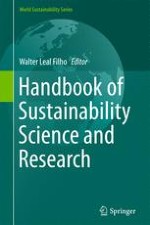2018 | OriginalPaper | Buchkapitel
A Critical Analysis of the Sustainable Development Goals
verfasst von : Ranjula Bali Swain
Erschienen in: Handbook of Sustainability Science and Research
Aktivieren Sie unsere intelligente Suche, um passende Fachinhalte oder Patente zu finden.
Wählen Sie Textabschnitte aus um mit Künstlicher Intelligenz passenden Patente zu finden. powered by
Markieren Sie Textabschnitte, um KI-gestützt weitere passende Inhalte zu finden. powered by
